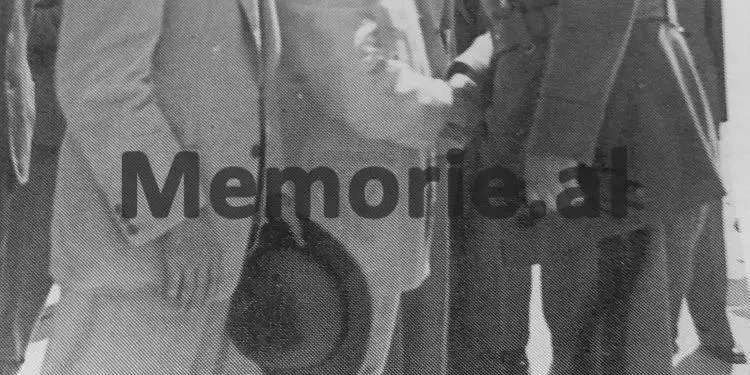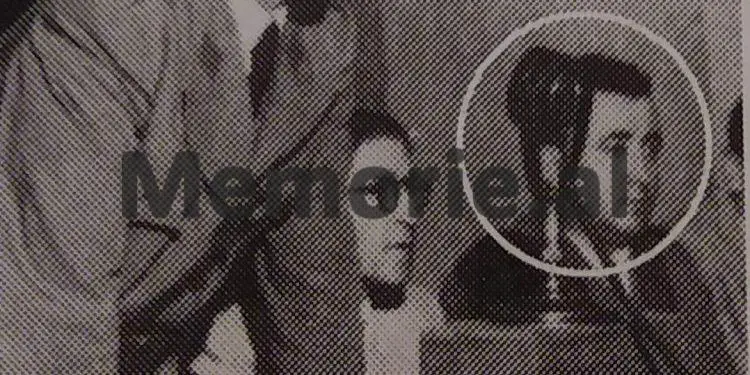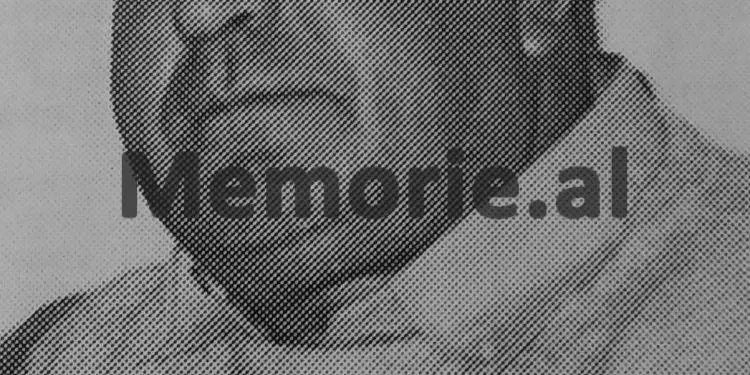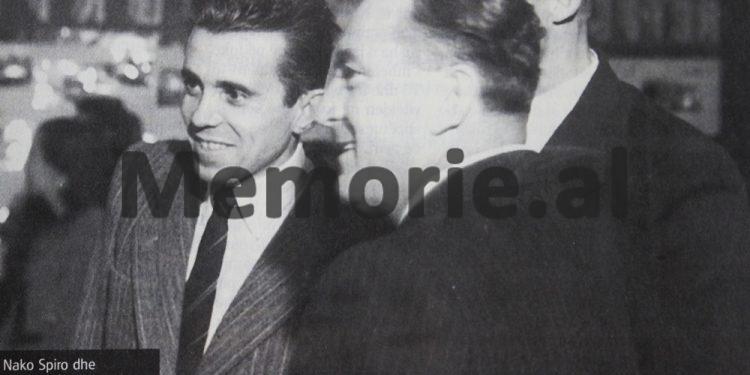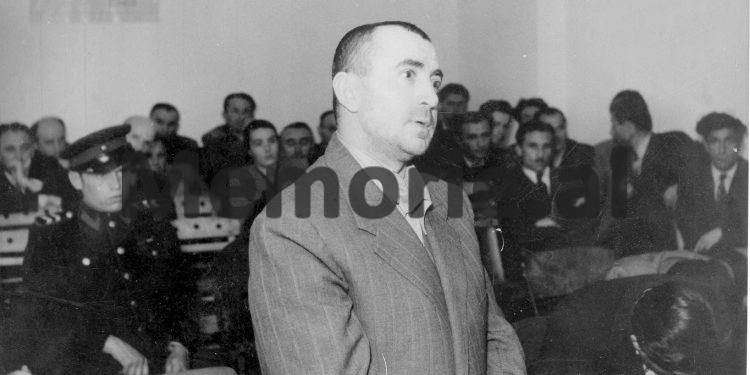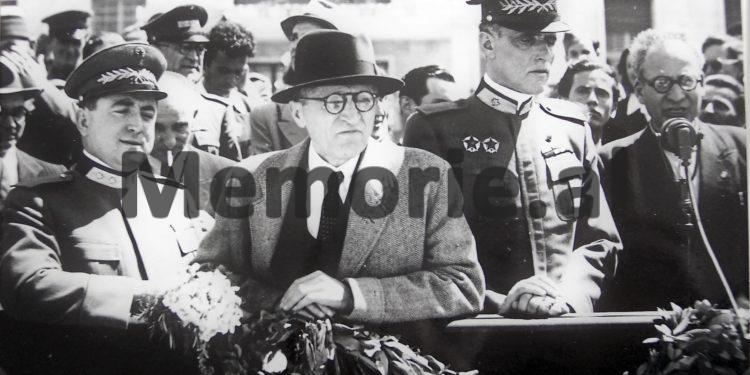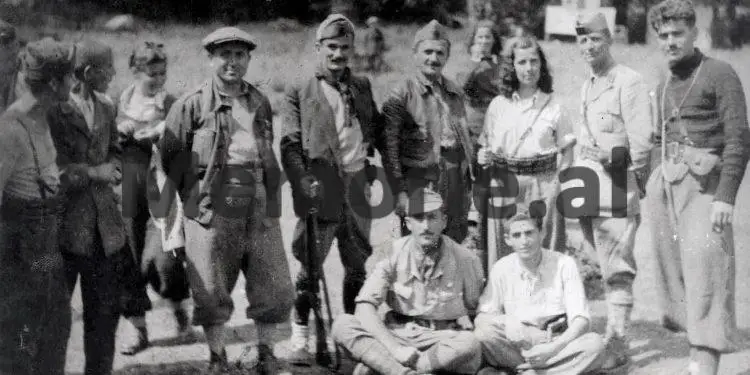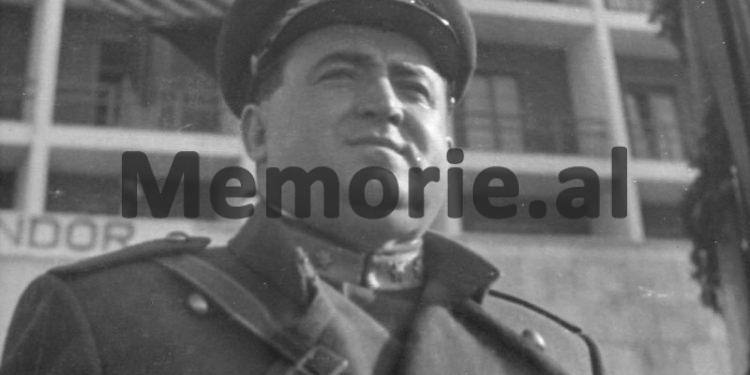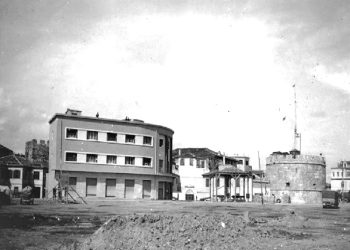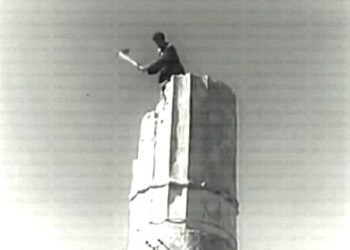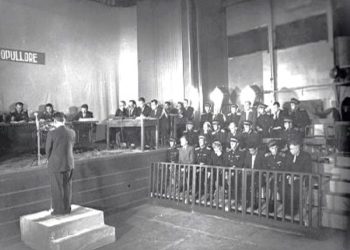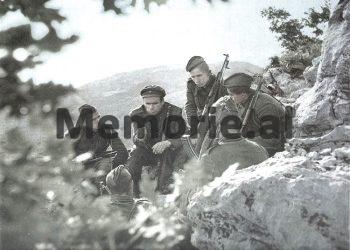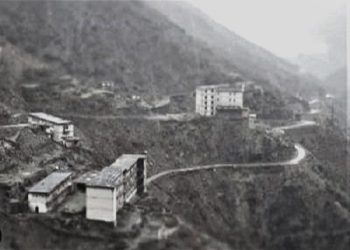Dashnor Kaloçi
The fifth part
Memorie.al publishes the rare and unknown story of Koçi Xoxe originally from Cologne, but born in 1911 in the village of Negovan in Florina, Greece, where their family had settled for economic reasons, who after studying and graduated with honors in the classical gymnasium of Thessaloniki in 1929, where he was introduced for the first time to the communist ideas and literature of the Marxist-Leninist groups operating in Greece at that time, returned to the city of Korça, later becoming one of the founders of the first cell communist in Albania and vice-president of the Communist Group of Korça, since the early 1930s, chairman of the Society ‘Puna’ in 1936, where in the elections held that year, the people of Korça elected him as chairman of the Municipality, but was not allowed by the government of King Zog, as he had been arrested and imprisoned several times for communist activities. Koçi Xoxe’s participation in the founding meeting of the Communist Party of Albania in November ’41, (where he went a day late, because he was busy organizing the demonstration on November 7 of that year in the city of Korça where he remained killed the young communist, Koci Bako), where for his great contribution to the communist movement, he was elected in absentia, as a member of the Provisional Central Committee, and then as a member of the General Staff of the National Liberation Army since July 10, 1942 at the Labinot meeting, the delegate to the Përmet Congress on May 24, 1944, where he was awarded the rank of lieutenant general, and at the Berat meeting in October of that year, he was elected deputy prime minister headed by Enver Hoxha. Xoxa’s brilliant career immediately after the end of the War, climbing the ranks of the party and state hierarchy, as organizational secretary of the Albanian Communist Party, member of the General Presidency of the Democratic Front of Albania, member of the People’s Assembly, Minister of Internal Affairs and Deputy Prime Minister of the ‘democratic government’, being the number two figure of communist Albania, after Colonel-General Enver Hoxha. Unknown photos and rare testimonies of his two sons, Genc and Fatos, who for the first time shed light on the unknown history of their family and father, Koçi Xoxe, his relationship and relations with Enver, as well as the reasons the truth of his beating and physical elimination, as well as their tragic fate after 1949, when he was shot somewhere in a forest on the outskirts of Tirana (where the former Kinostudio “Shqipëria e Re” is located), where today his bones!
Continued from the previous issue
How were the archives for Koçi Xoxen falsified?
After the blow and eliminations that Enver Hoxha made to his rival Koçi Xoxe, he and his people did not forget to raise a black halo for him, charging him with all the crimes that were committed after the end of the War, until November 1948, when he was arrested. Thus in an archival document of the former State Security found after the ’90s, which is entitled “Report on terror and persecution in Kosovo” (dated 19.X.1950), among other things it says: “Inspired out of nationalist and chauvinist sentiments, the Yugoslav government has terrorized and is terrorizing in the most barbaric way the national minorities and especially the Albanian population of Kosovo and Metohija, consisting of about 100,000 Albanians. Used by the kings of Serbia and the Hitlerite Gestapo Thousands of innocent Kosovars were illegally shot by the UDB, both during the war and after the war. the traitor Koçi Xoxe, who in his capacity as Minister of Internal Affairs of Albania, at the beginning of 1945, authorized the UDB officers to shoot illegally and without trial on Albanian soil, more than 1,000 innocent Kosovars, as the Yugoslav government feared the patriotism and fighting spirit of the Kosovo Albanian people “. What is the truth about this report given in this document of the former State Security, which dates back to September 19, 1950? As can be seen from the date when he was compiled, which corresponds to a few months after Xoxe was beaten and shot, we are dealing with the period when the campaign for the denigration of his figure was at its peak. In this context, it is this report that accuses Koçi Xoxen, that in the beginning of 1945, when he was in the post of Minister of Interior, he participated and ordered the shooting of more than 1000 Kosovars by the UDB- of. The shooting of these Kosovars is more than real and it is about what is already known in history as the ‘Bar Massacre’, when the UDB shot more than 1,500 Kosovars, who passed from Kosovo through Albania and massacred them in Bar. But what is not true in this State Security document, is that at the time when this event took place, in February 1945, in the post of Minister of Interior was not Koçi Xoxe, but Colonel Haxhi Lleshi . Regarding this event, the former President of Albania Haxhi Lleshi himself spoke in an interview given on TV Arbëria (author of this article), a few months before he passed away, where he said: “When the Bar massacre took place, I was in the post of Minister of Interior and after that event I informed Enver Hoxha, who was very upset by this. It is not that we gave permission to the Yugoslavs to do what they did. But at that time the border was open and we could not stop them from crossing Kosovo through Albanian territory to bar. “We had nothing to do about it, because we could not open a war against Serbia.” The ‘Bar Massacre’ took place, it was not Koçi Xoxe in the post of Minister of Interior, but Haxhi Lleshi It is also true that at that time, Koçi Xoxe was the Director of State Security in the Ministry of Interior, but in relation with that event, he did not even have the same authority to come out over the Minister of Interior, even he and a puppet. Even if we take it well since Koçi Xoxe after collaborating with the Yugoslavs for the shooting of 1000 Kosovars, why it did not rise those three years that Koçi Xoxe was in high positions, but after his shooting ?! The people who drafted that report of the State Security, it is not that they did not know that in that period Xoxe was not a minister, as it is said in relation,, but it is made with the intention of clearly, that: every crime committed in that period, be blamed on Koçi Xoxes. And Enver Hoxha did it best, making it so that until the collapse of the communist regime in the late 1990s, his name and figure were identified as one of the greatest criminals Albania had ever had its history!
How was the Xoxe family treated after Koçi was shot?
But how was Koçi’s family treated after his shooting? In this regard, Fatos, the third son of the Xoxe family, testified to us: “After the shooting of the father, the whole burden of the family fell on our grandfather Dhimitri, or Barbas, as we called him. He was never intimidated by the state of our family after his father was shot. He worked as a sheet metal master, and in addition to the work he did to support and nurture our six children, and full of other troubles the family had, he did not stop searching for the grave of his son and our father. Grandpa Dhimitri, from the time his father was shot until his death in October 1971 (at the age of 88), did not stop searching for his son’s burial place. He left no one without asking about it, but never managed to get an accurate answer. He changed jobs and went to work at the “Josif Pashko” Combine, near the River Bank, where the shootings of Enver Hoxha’s political opponents or “enemies of the people” as they were called at the time, were usually carried out. Barba Dhimitri, often got angry and said: What state is this that does not even give a grave to its citizens and is afraid of the dead?! Although the grandfather was tired and exhausted searching for his son’s grave, he kept the father’s message, which he had told him when we last met, that the grandfather should not go to anyone to pray for him. “Thus, the grandfather never addressed the people he had once known in” Bllok “, nor the father of Enver Hoxha, whom he had many friends”, recalled Fatosi, Koçi’s third son, regarding the efforts of his grandfather, Dhimitri, for him found the bones of his son.
The imprisonment of Koçi, Besnik’s son and the departure of the family from Tirana!
Although after 1949, Koçi Xoxe was considered an “agent of the Yugoslavs” and one of the greatest “criminals and enemies of the people” that Albania had ever had, surprisingly, Enver Hoxha did not remove his family from Tirana to be interned. , as he had done with almost all the families of his close associates in the senior leadership, whom he had imprisoned or shot! As if he had regretted not having done the same with Koçi Xoxe’s family, in 1975, after the sentence of 9 years of political imprisonment of Besnik, Koçi’s youngest son, Enver removed the Xoxe family from Tirana. Koçi’s sons insist that their departure from Tirana for internment could not have been done without the order or knowledge of Enver Hoxha, because leaving them for a long time in Tirana; they could not be removed without anyone his permission. Regarding the imprisonment of his brother Besnik and the internment of their family, Fatos Xoxe told us: “My grandfather, Dhimitri, died in 1971 and he did not see our horrors of internment that came to us after the arrest and imprisonment of his younger brother, Besnik, in 1975. Until October 29, 1975, we as a family were left to live in Tirana, all together. A few days earlier, on October 17, Brother Besnik, who had graduated from high school and worked as a mechanic, was arrested. After a rigged trial, he was sentenced to 9 years in political prison, for alleged agitation and propaganda. After Besnik was sentenced, our family sent us into exile in the village of Kryevidh in Kavaja. There we all worked in agriculture, in the agricultural cooperative and the villagers of that area, saw us with great pity and treated us very well. They did their best to help us. In the village of Patok i Krye vidhit where we stayed for ten years, we had a small village house with two rooms and a kitchen, and a small garden in front. But it was not said that even there in that village they would leave us alone, because in 1985, they removed us from there and sent us to Selenica in Vlora. We stayed there for seven years, where the three brothers Genci, Çlirimi and I, worked in the mine. We were able to move from Selenica only in September 1992, when the internment ended. When we came to Tirana, by order of the Municipality, they gave us a room 5 by 4 (20 square meters), in the City of Students (where our mother lived until after 2000 and officially that apartment is ours), because the state “We have not been given any other living room,” concluded Fatos Xoxe, the son of former Lieutenant General Koçi Xoxe, “People’s Hero”, former member of the Politburo, Organizing Secretary of the Central Committee of the Communist Party of Albania, Deputy Prime Minister, Minister of Interior and Member of the People’s Assembly, who was shot on the night of July 10, 1949, somewhere in a forest on the outskirts of Tirana at that time (where today is the central building of the former Kinostudio ” Shqipëria e Re ”), after being dismissed from all official party and state functions, after a conflict with Enver Hoxha, which had its origin in the great clash between their masters, Stalin and Tito. Memorie.al





